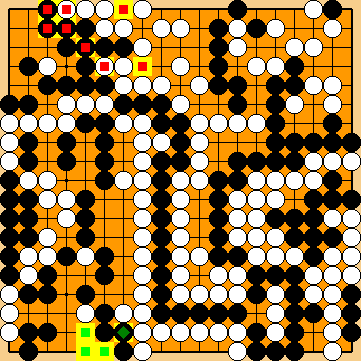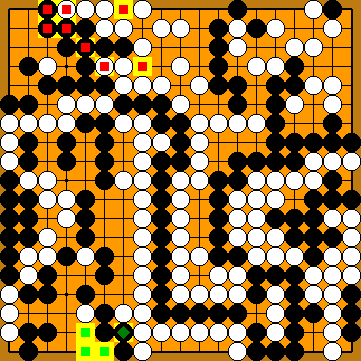New Story Line 2022
Prof. Jeong SooHyun's Advice
to Start the Endgame Early
|
We start with the presentation of the later part of Our Solution (2015), which emerged after the kind advice of Prof. Jeong SooHyun 9p to start the endgame at the left side with the Tsuke of Yamada Shinji 6p "early", i.e. immediately after the creation of Black's nine-stone nakade at the left edge. Even with the classical Nakade Sequence played before, KataGo's Immediate Crosscut will improve the result for White by three points. However, wasting even a single move on occupying opponent's liberties in the Main Semeai before playing the in the Main Semeai before playing Yamada Shiji's Tsuke turns out to be a technical mistake: One move too late - and previously uncritical subvariations develop an unexpected life of their own. Two moves too late - and the chance is lost once and for all. Several variations in which KataGo explore White spaces on the touristic map of Black's lower left corner should be particularly interesting. | |
|
Referenced by ( Let's enter the world of professionals and look through the eyes of some help-seeking amateurs ... |
|
( Please note that at this time we had not played the "early" kikashi of |
|
KataGo's atari |
|
|
|
Later, some doubts arose about this, which is why we then brought this kikashi forward until just before the end of the Crosscut Sequence in the left centre. However, according to KataGo's current assessment, our original timing would be quite possible. If one wanted to be on the sure side, one would let two more moves ( |
|
|
|
We continued with |
|
The capture of Black's nine-stone nakade. We mistakenly assumed that the endgame on the left side of the board would be independent of the Main Semeai. Only KataGo taught us better, as will be explained in detail below. |
|
The mutual occupation of opponent's liberties in the Main Semeai. |
|
The mutual occupation of opponent's liberties in the Main Semeai continued. |
|
After Black's oki White can choose between the Capture Variation (starting with In Our Solution (2015) ... The final scores of the game will become Black + 5 / Black + 3. |
|
Let's find out what KataGo thinks about this matter ... |
|
Continuing with the Main Semeai, e.g. wth |
|
Please note Black's two still missing moves |
|
Trying to resist by giving atari
|
|
Playing the atari at |
|
|
|
|
|
Capture Variation: Compared to Our Solution (2015), ...
In total, White gained three points. Black + 5 => Black + 2 |
|
Semeai Variation: Compared to Our Solution (2015), ...
In total, White gained three points. Black + 3 => Jigo |
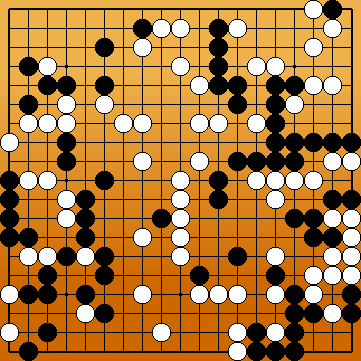
 2037
2037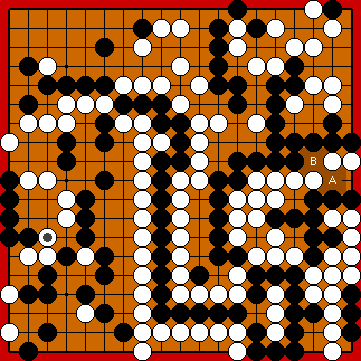
 2022MainLine
2022MainLine , which starts the Nakade Sequence.
, which starts the Nakade Sequence. ,
,  in the hanezeki.
in the hanezeki.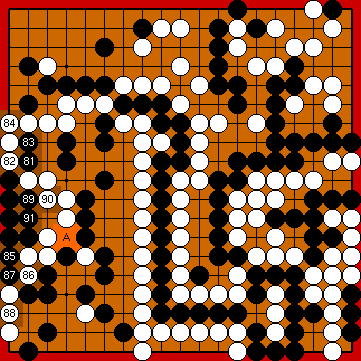
 :
: :
: on the single Black stone below was still hidden in the mist of the future.
on the single Black stone below was still hidden in the mist of the future.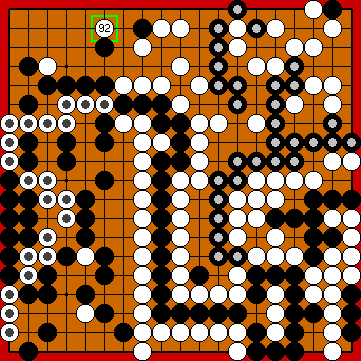
 :
: in the upper right already decided, right now would be the appropriate time to start the endgame on the left side of the board with Yamada Shinji's Tsuke.
in the upper right already decided, right now would be the appropriate time to start the endgame on the left side of the board with Yamada Shinji's Tsuke.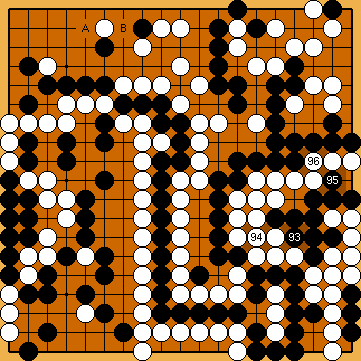
 :
: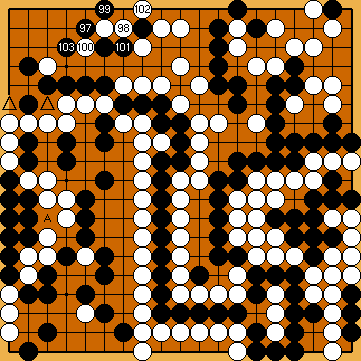
 :
: are not yet occupied by Black stones), we simply adopted the original move sequence shown to us by Yamada Shinji.
are not yet occupied by Black stones), we simply adopted the original move sequence shown to us by Yamada Shinji. :
: would have been better for White.
would have been better for White. :
: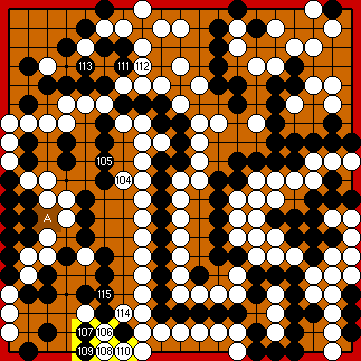
 :
: .
. :
: :
: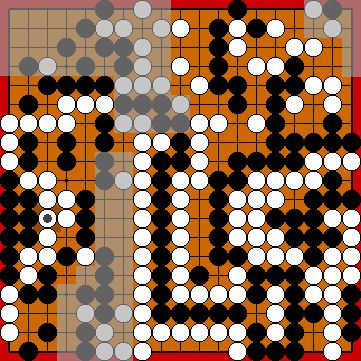
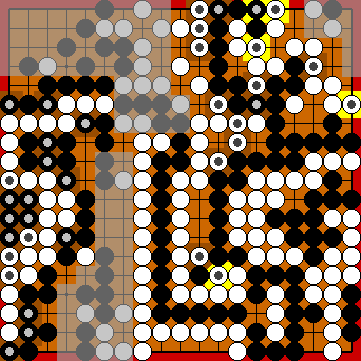
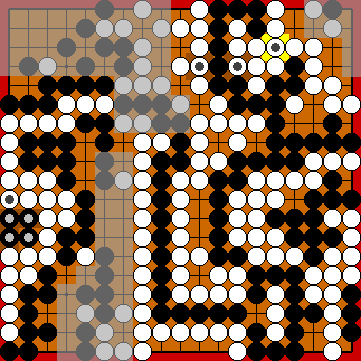
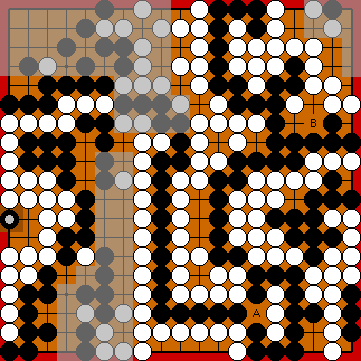
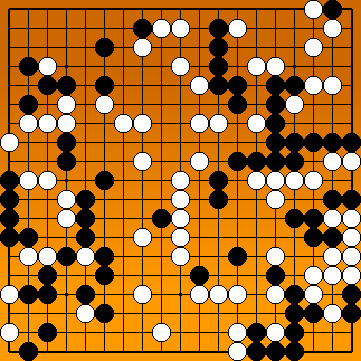
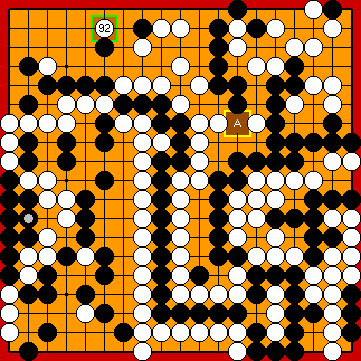
 2043a
2043a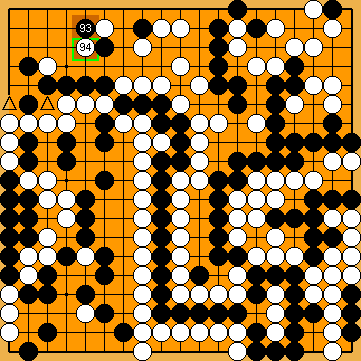
 :
: in the lower border of his corner.
in the lower border of his corner.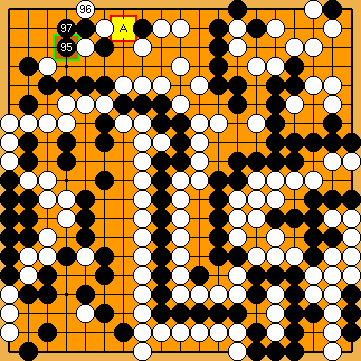
 : (A
: (A  :
: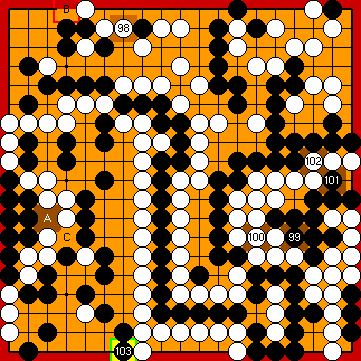
 :
: around the Nakade, it is better for Black to play the descent to the lower edge, stabilising his shape in the lower left, and also defending his territory in the lower left corner.
around the Nakade, it is better for Black to play the descent to the lower edge, stabilising his shape in the lower left, and also defending his territory in the lower left corner. at the upper edge would be one point worse, due to the remaining weaknesses of Black's large group at the left, which KataGo would be able to exploit.
at the upper edge would be one point worse, due to the remaining weaknesses of Black's large group at the left, which KataGo would be able to exploit.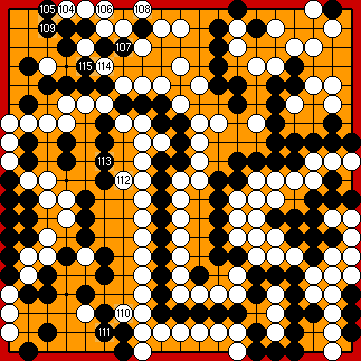
 :
: :
: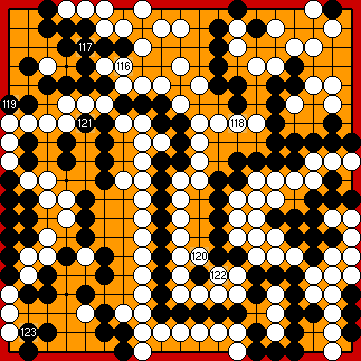
 :
: :
: :
: :
: